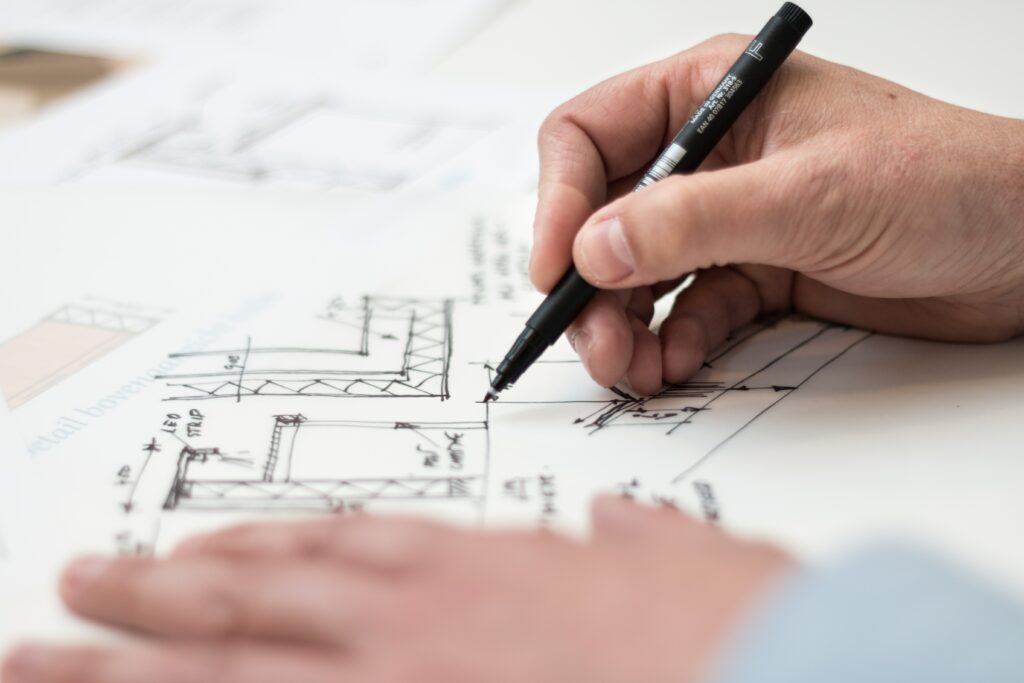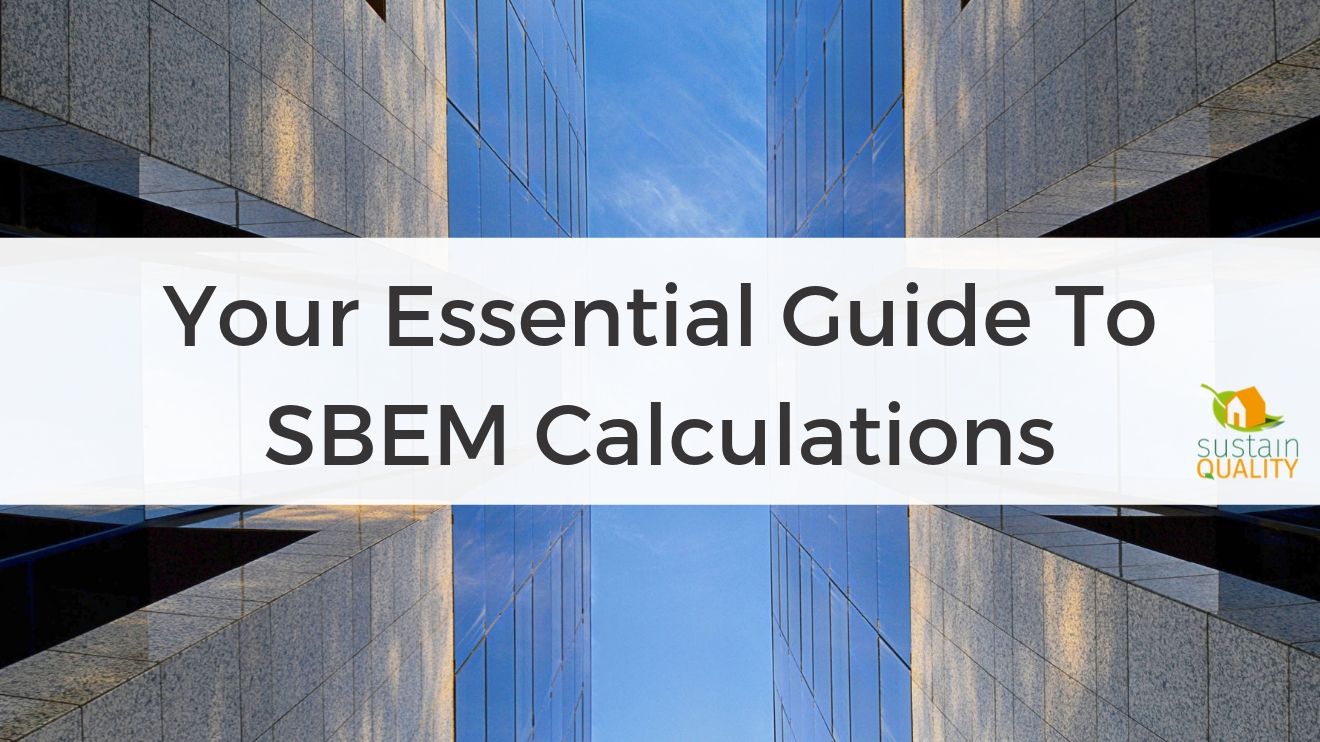A high priority within the building industry is to find ways
to create greener, more sustainable developments. As a result, energy
efficiency is a high priority in the UK.

Energy assessments are carried out to ensure that new
buildings are:
- Well insulated
- Well ventilated
- Efficiently heated, cooled and lit
- Sustainable
SBEM Calculations: The Basics
SBEM is a computer program. It provides an analysis of a
building’s energy consumption. It calculates monthly energy use and carbon
dioxide emissions of a building, using a description of the building geometry,
construction, use and HVAC and lighting equipment.
SBEM calculations were originally based on the Dutch methodology NEN 2916:1998 (Energy Performance of Non-Residential Buildings). It has since been modified to comply with current UK building regulations.
SBEM: Key Facts
- SBEM stands for the Simplified Building Energy
Model and has been available in the UK since 2006.
- It complies with Part L of the Building Regulations, which states the government’s commitment to raising the energy performance of buildings.
- SBEM calculations are required for commercial buildings, whilst SAP calculations are for dwellings.
- Sustain Quality offers both SBEM and SAP calculations, depending on your specific requirements.
- In order to produce a new or up-to-date Energy Performance Certificate (EPC), you need to carry out SBEM calculations. It is against the law to rent or sell a commercial property without an EPC.
- The EPC rates the property between 1 and 100. The closer to 100 the rating is, the more energy-efficient the building is.
- SBEM calculations come in two formats: L2A (new builds) and L2B (conversions and extensions) and contribute to a new or updated Energy Performance Certificate (EPC).
As Design and As Built Stage
‘As Design’ and ‘As Built’ refers to the construction stage
of a development. SBEM calculations are important during both ‘as design’ and
‘as built’ stage due to a number of factors which we will explore below.
As Design

The design stage SBEM assessment should be completed prior
to the construction starting. During the As Design Stage, an SBEM calculation
may anticipate any potential barriers in achieving compliance with Building
Regulations.
We recommend that you do this early in the process as it
will reduce your costs and will provide you with more flexibility regarding
materials and energy-efficient systems used.
It is important to note that without a Design Stage SBEM
calculation, building control bodies cannot allow construction on the
commercial building to commence.

As Built
The as built SBEM calculation is carried out once the work
has been completed. During the As Built Stage, it’s important that the SBEM
calculation is carried out so that building control can sign the project off.
If alterations on the building have been carried out, this
will be incorporated into the As Built SBEM calculation.
The property cannot be issued with an Energy Performance
Certificate (EPC) until the SBEM calculation has passed the required targets.
What Details Do We Require?
The more information you give us prior to carrying out a
calculation, the more accurate our assessment will be. Ideally, we’d like:
• Full-scaled
plans
• Building
fabric details
• Sections
and elevations of the final or intended layout
• Information
on air tightness and thermal bridging
• Specifications
for heating, cooling, ventilation, hot water and lighting
• Any
renewable systems to be installed
Click here for a copy of the appointment form we require you to complete prior to the assessment being carried out.
How Much Do SBEM Calculations Cost?

When it comes to SBEM calculations, we get a lot of enquiries as to how much they cost. As you might have guessed, this figure will vary depending on the type of project and the individual requirements of the project.
Cost For The Design Stage
We offer SBEM calculations during both stages of the construction process. During the design stage, we carry out an SBEM calculation prior to the construction work being carried out.
This shows that the building meets the Target Emission Rate
(TER) for efficiency.
An SBEM calculation at this stage would cost anything in the region of £350-£5,000 depending on the size of the development.
Cost For The ‘As Built’ Stage
Once works have been completed (the ‘as built’ stage), we
will carry out another SBEM calculation.
The ‘as built’ SBEM calculation should be reflective of the
calculation carried out during the ‘as design’ stage.
We aim to provide a detailed and comprehensive ‘as design’
SBEM calculation so that your work can be signed off by Building Control in a
smooth and efficient manner.
A SBEM calculation at this stage would cost anything in the
region of £350-£5,000 depending on the size of the development.
‘As Design’, ‘As Build’, Or Both?
We recommend that you get your SBEM completed as early as
possible. We would suggest that you involve your assessor as part of the Design
team in order to identify any shortfalls before they become a problem.
In an ideal world, it would be great to stay with you
throughout the process so that we can complete the SBEM calculations at both
stages of the build. However, we understand that certain factors don’t allow
for this.
For example, you might sell the building(s) before works
have been completed. In this instance, it would be up to the new owner to
organise a SBEM calculation. This may be months or even years down the line.
We recognise that there is a need for flexibility and our core
aim is to assist and support in the smooth running of your building project.
What Are You Paying For?
Essentially, you are paying for our expertise, resources
and time. We’re highly skilled in the latest, government approved energy
assessment software and a large part of our work involves careful and strategic
use of this software.
Factors Affecting Cost Of A SBEM Calculation
One of the main reasons that we suggest working closely
alongside the design team is to avoid any factors that could affect the cost of
a SBEM calculation.
Major changes in design may require another SBEM
calculation to be carried out, which could take up more time and resources for
all parties involved.
What Buildings Require An SBEM Calculation?
Every new building with a heating system will need to be
assessed to check energy efficiency against current Government emission
targets.
If you’re building a dwelling, such as houses or apartment blocks, it needs its own SAP calculation, whereas any building that isn’t a dwelling will require an SBEM calculation.
In simple terms, an SBEM calculation will be needed for all non-domestic, new-build properties.
What Does The Term ‘Non-Domestic’ Mean?
The term ‘non-domestic’ refers to any property that is not
used as a place of permanent or semi-permanent residence. The most common
example of a domestic building is, of course, a house.
Non-domestic buildings also refer to B&B accommodation
and holiday homes which are let for 140 days or more a year.
Examples of non-domestic buildings include:
- Shops
- Offices
- Factories
- Schools
- Warehouses
- Pubs
- Restaurants
- Town halls
Domestic Buildings
Domestic buildings also need to demonstrate compliance with
Building Regulations. The difference here is that an SAP calculation would be
required, rather than an SBEM calculation. Sustain Quality provides both SAP
and SBEM calculations, depending on the nature of your project.
A More In-Depth Exploration Of SBEM Buildings
Construction Of New Buildings, Other Than Dwellings
The obvious buildings are the ones listed above, but
hospitals and hotels also require SBEM calculations to be carried out.
When it comes to student accommodation and care homes, there
is a certain element of confusion amongst some of our designers
Generally, if the living space is self-contained (as in,
people have their own bedroom, kitchen, and bathroom facilities), an SAP calculation
would be required.
SBEM calculations are required when there are shared areas,
such as kitchens, lounges, and corridors.
If in doubt, talk to one of our experts today.
Fit-Out Works
An SBEM would be required if:
- The fit-out work is part of the construction of a new building.
- It is the first fit-out shell and core development where the shell is sold or let before fit-out work is carried out.
Extensions To Existing Buildings
An SBEM would be required if the extension to the existing
building exceeds 100m2 and greater than 25% of the total floor area of the
existing building.
Buildings That Contain Both Dwellings And Non-Dwellings
An example of this would be a block with shops on the ground floor and flats above. In this instance, an SBEM applies to the shop and common areas of the flats (stairwells and corridors). The flats will require an SAP calculation as it is classed as a non-commercial dwelling.
Living Accommodation and Commercial Purposes
Some buildings contain both living accommodation and space
used for commercial purposes, the whole building should generally be treated as
a dwelling, and therefore would require an SAP calculation.
This is based on the assumption that the commercial part
could revert to living accommodation, and it doesn’t occupy a substantial
portion of the total building. This doesn’t apply if there is a small bed-sit
in a large office building!
Buildings That Are Exempt
We would always recommend that you contact Building Control
in your local area before making any assumptions regarding exemption. However,
below are the main exemptions.
Places Of Worship
Places of worship are exempt from SBEM, but if there are
offices, catering facilities, etc adjoining these, they would not be exempt. In
this instance, a part building calculation would be required.
Temporary Buildings
If a temporary building has a use time of fewer than two
years, an SBEM calculation would not be required. If the temporary building
exceeds this, you’d need to get your SBEM calculation booked in.
Buildings With Low Energy Demand
Examples of this are industrial sites, workshops, and agricultural
buildings. The energy demand is concerning the energy for occupants, not an
industrial or agricultural process.
Stand Alone Buildings
If the building has a total floor space of less than 50m2,
then an SBEM calculation would not be required.
Distinguishing between those buildings that require SBEM or
SAP calculations is the first step, before entering into the design process of
your project.
How Are SBEM Calculations Made?
SBEM calculations come in two formats: L2A (new builds) and
L2B (extensions and conversions). The primary purpose of the calculations is to
produce a BRUKL (Building Regulations Part L) report in order to create a new
or updated Energy Performance Certificate (EPC).
The SBEM Assessment: A Computer Program
We use details of your proposed site, for example, drawings,
use of materials, building’s geometry, and construction, to make a prediction
of your expected carbon emissions and monthly energy use.
This is a computer-based task and we use software known as iSBEM. The latest version of the software is known as version 4.1.a.

SBEM Calculations
Without getting too overly technical, the SBEM essentially
completes a range of calculations to determine energy performance.
The programme combines the building’s description data
to calculate the energy performance, split into different end-uses on a
monthly basis. These are heating, cooling, lighting, ventilation, hot water,
and auxiliary energy.
Weather Data
As well as the building’s geometry, Weather Data is also
used. Weather Data consists of monthly values including outside dry-bulb
temperature and solar radiation based on the TRY (Test Reference Years) for 14
UK locations. They are:
- Belfast
- Birmingham
- Cardiff
- Edinburgh
- Glasgow
- Leeds
- London
- Manchester
- Newcastle
- Norwich
- Nottingham
- Plymouth
- Southampton
- Swindon
Different Projects
Our approach will vary slightly depending on the nature of
the project. If you require a site survey, we will visit you on sight, take
measurements and prepare your SBEM calculation.
If your project is a new build or extension over 100m2 and
you have completed scaled drawings, we will carry out a desk-based exercise and
prepare your SBEM calculation for submission to building control.
For new builds, your SBEM calculations will be split into
two reports: ‘design stage’ and ‘as built’.
For extensions and conversions, L2B SBEM Calculations are
split into ‘notional’ and ‘proposed’ reports.
How To Pass An SBEM Calculation

There are several criterions for Part L2A of the UK’s
Commercial Building Regulations in order to pass an SBEM calculation which we
will explore now.
It’s important to note that this is not a one-size-fits-all
approach, but there are key areas that can make improvements to your results
and are common across most non-domestic building types.
Demonstrating Compliance
BER<TER
The calculated CO2 emission rate (this is known as the
BER-Building Emission Rate) must not be greater than the Target Emission Rate
(TER).
This is the main requirement of Part L, and it is mandatory.
Fabric
Achieving a thermally efficient, air-tight building allows
for greater flexibility regarding the specification of building services.
However, if your project is under 500m2, it is exempt from an air permeability
test.
You may choose to carry out a voluntary air test on smaller
buildings. This may be a cost-effective way to hit emission targets.
Heating
It is recommended that you select a heating system
compatible with the intended use of the building. This will ensure your route
to compliance is straightforward.
A centralised heating system is the best option, and we
recommend that you avoid localised electric heating unless absolutely
necessary.
Opt for ground or air source heating if the building is not
connected to a gas network.
Biomass or a Combined Heat and Power (CHP)
A Biomass or a Combined heat and power (CHP) are effective
ways to simultaneously produce heat and electricity, capturing and utilising
the heat that is a by-product of the electricity generation process.
By generating heat and power simultaneously, CHP can reduce
carbon emissions by up to 30% compared to the separate means of conventional
generation via a boiler and power station.
A Biomass and CHP does require a lot of space, so bear this
in mind when considering heating options.
Warehouses and Spaces with High Ceilings
We recommend that for these applications, you consider
radiant heating as it will warm people and objects, rather than increase air
temperature. If traditional hot air systems are installed, we can install
de-stratification fans to ensure an even temperature balance.
Ventilation And Cooling
Choose air conditioning cooling systems that are appropriate
for the size of the space.
Consider strategies that focus on utilising thermal mass,
heat gain control and heat dissipation along with natural ventilation.
Lighting
We recommend that you choose LED lighting applications due
to their high efficiency and low expense.
In order to keep wasted energy to a minimum, couple the bulb
section with an effective control system, utilising passive infra-red or
photoelectrics.
Why Are SBEM Calculations Important To Us?
Sustain Quality has a vision for designing sustainable
buildings across sectors. We help clients make better decisions, integrate
sustainability into their projects and create innovative solutions.
We also aim to make your building process as smooth and
efficient as possible, providing you with certification that enables you to
achieve completion and compliance.
By reducing energy demand and increasing supply through
renewable energy sources, Sustain Quality will enable users to benefit from
more sustainable, reliable energy sources in the future.
If you would like any more information on how we can provide you with energy statements to meet your local authority’s emission target-whether it is an SAP or SBEM calculation-get in touch today.






